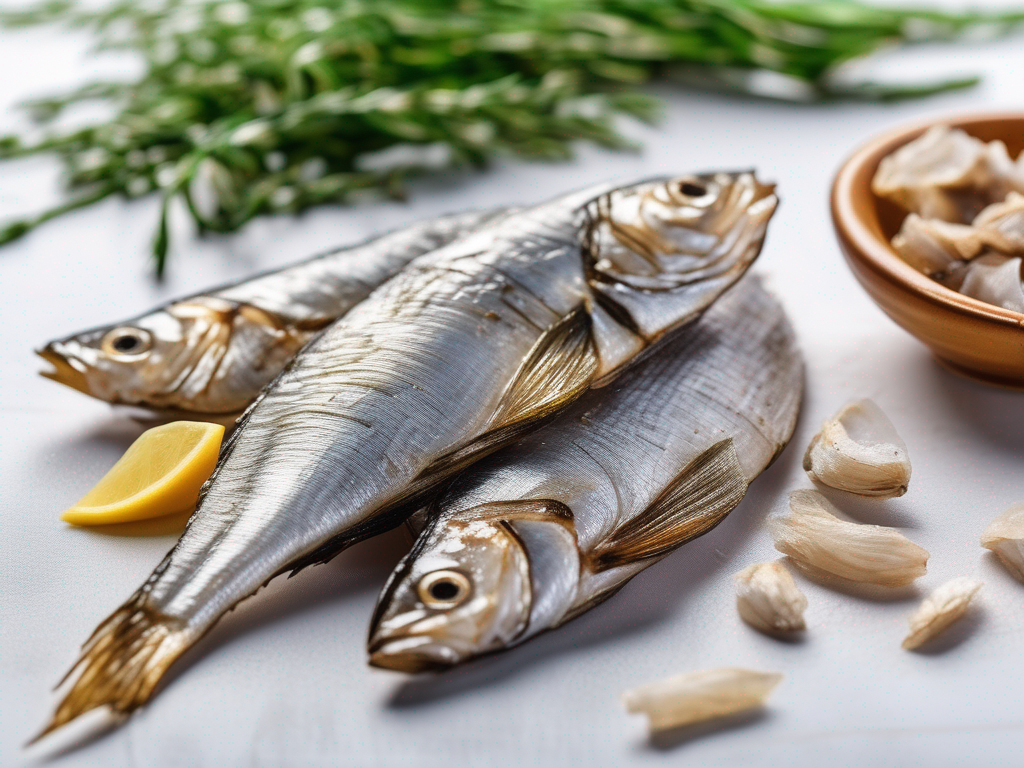
Proper Storage of Dried Salted Fish to Prevent Spoilage
Get Your Free Food Safety Cheat Sheet
30 most common foods with instant answers. Print it and stick it on your fridge—completely free!
Proper Storage of Dried Salted Fish to Prevent Spoilage
Dried salted fish is a popular ingredient in many cuisines around the world, known for its intense flavor and long shelf life. However, improper storage can lead to spoilage and potentially harmful bacteria growth. In this guide, we will discuss the best practices for storing dried salted fish to ensure its quality and safety. (Dried salted fish)
Understanding Dried Salted Fish
Before diving into storage tips, let's briefly discuss what dried salted fish is and why it needs special attention when it comes to storage.
What is Dried Salted Fish?
[Dried salted fish](/food/dried salted fish) is a preservation method that involves curing fish with salt and then drying it. The salt acts as a preservative, inhibiting the growth of bacteria and extending the fish's shelf life. Drying removes moisture from the fish, further preventing spoilage.
Why Proper Storage is Important
Despite its preservation methods, dried salted fish is still susceptible to spoilage if not stored correctly. Factors such as moisture, temperature, and exposure to air can affect the quality and safety of the fish. Proper storage practices are essential to maintain the flavor and texture of the fish while preventing bacterial contamination.
Tips for Properly Storing Dried Salted Fish
Now that we understand the importance of proper storage, let's explore some practical tips to ensure your dried salted fish stays fresh and safe to consume.
1. Choose the Right Packaging
Proper packaging is crucial for storing dried salted fish. Consider the following options:
- Airtight Containers: Use airtight containers to prevent exposure to air, which can cause the fish to spoil faster.
- Vacuum Sealing: Vacuum-sealing the fish removes air and helps maintain its quality for a longer period.
- Freezer Bags: If storing in the freezer, use freezer bags designed to protect the fish from freezer burn.
2. Store in a Cool, Dry Place
Proper temperature and humidity are essential for storing dried salted fish. Follow these guidelines:
- Temperature: Store the fish in a cool, dry place away from direct sunlight and heat sources.
- Humidity: Keep the storage area dry to prevent moisture buildup, which can lead to mold growth.
3. Avoid Cross-Contamination
To prevent the spread of bacteria and odors, keep dried salted fish away from other food items. Follow these steps:
- Separate Storage: Store the fish in a designated area away from other foods to avoid cross-contamination.
- Clean Storage Area: Keep the storage area clean and sanitized to prevent the growth of harmful bacteria.
4. Check for Signs of Spoilage
Regularly inspect the dried salted fish for any signs of spoilage. Look out for the following indicators:
- Unusual Odor: If the fish smells off or foul, it may be spoiled.
- Discoloration: Mold growth, discoloration, or slimy texture are signs of spoilage.
- Texture Changes: Spoiled fish may feel soft or mushy instead of firm and dry.
5. Rotate Stock Regularly
To ensure you are consuming the freshest dried salted fish, practice proper stock rotation. Follow these guidelines:
- First In, First Out: Use the oldest stock first to prevent spoilage and waste.
- Labeling: Label containers with the date of purchase to track expiration and rotation.
Conclusion
Proper storage of dried salted fish is essential to maintain its quality and safety. By following the tips outlined in this guide, you can enjoy the unique flavors of dried salted fish while minimizing the risk of spoilage and contamination. Remember to choose the right packaging, store in a cool, dry place, avoid cross-contamination, check for spoilage signs, and rotate your stock regularly for the best results. With these practices in place, you can savor delicious dishes made with dried salted fish without any worries. (Dried salted fish)
Related Posts
Here are some other articles you might find helpful:
Authoritative Food Safety References
These agencies and university labs inform every tip and health precaution we publish.
USDA FoodKeeper – Cold Storage Guidelines
Official refrigerator, freezer, and pantry timelines maintained by the U.S. Department of Agriculture.
Visit USDA FoodKeeperFDA Produce Safety Rule & Grower Guidance
Field-to-fridge handling practices that prevent contamination of fruits, vegetables, and leafy greens.
Visit FDA Produce SafetyCDC Foodborne Illness Prevention Hub
Surveillance-backed guidance on pathogens, symptoms, and steps to reduce foodborne illness risk.
Visit CDC Food SafetyUC Davis Postharvest Technology Center
University research detailing optimal storage atmospheres for produce after harvest.
Visit UC Davis PostharvestPenn State Extension – Home Food Preservation & Safety
Peer-reviewed extension bulletins on safe canning, chilling, and reheating practices.
Visit Penn State ExtensionGet Your Free Food Safety Cheat Sheet
30 most common foods with instant answers. Print it and stick it on your fridge—completely free! Want more? Upgrade to the complete guide with 70+ foods.
Scan your food directly and get instant safety info using our AI-powered camera feature.